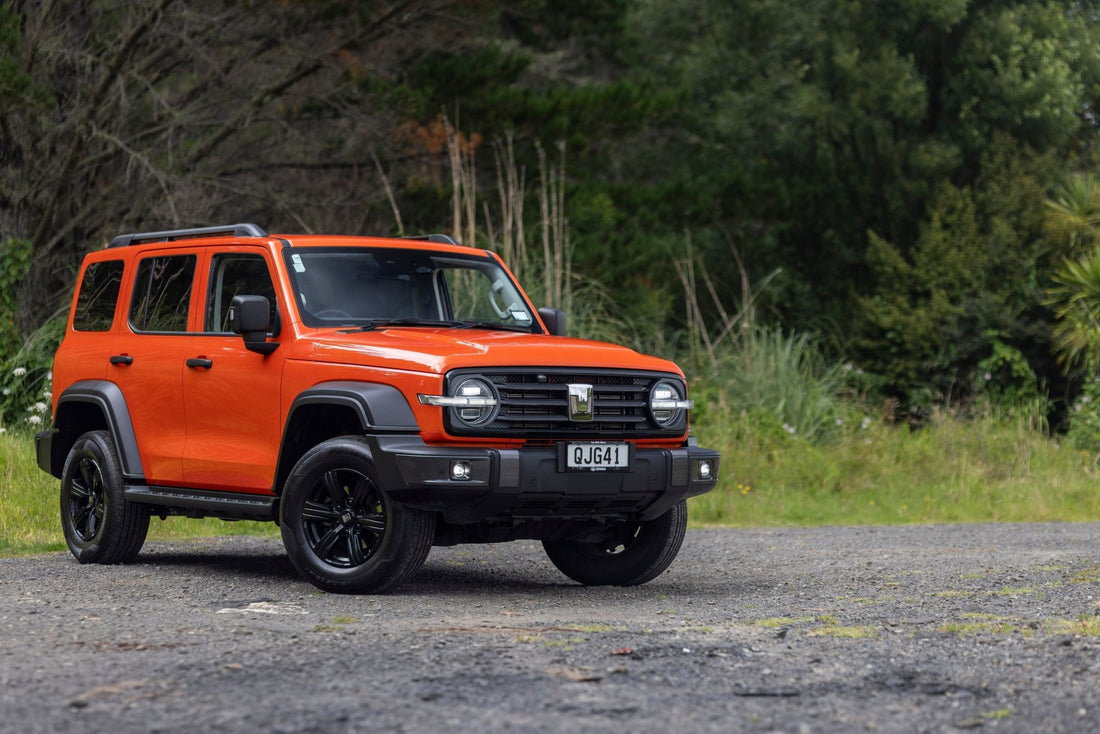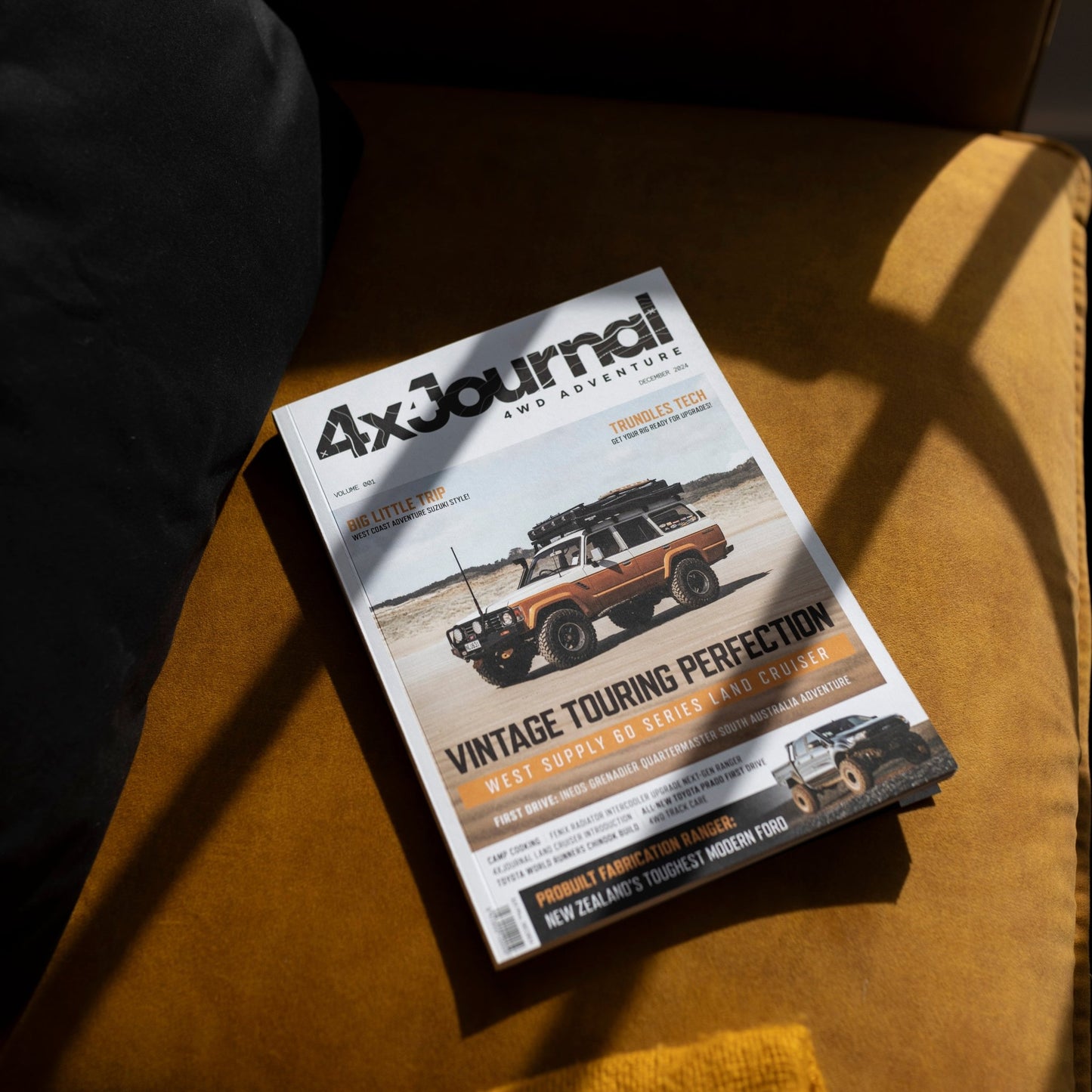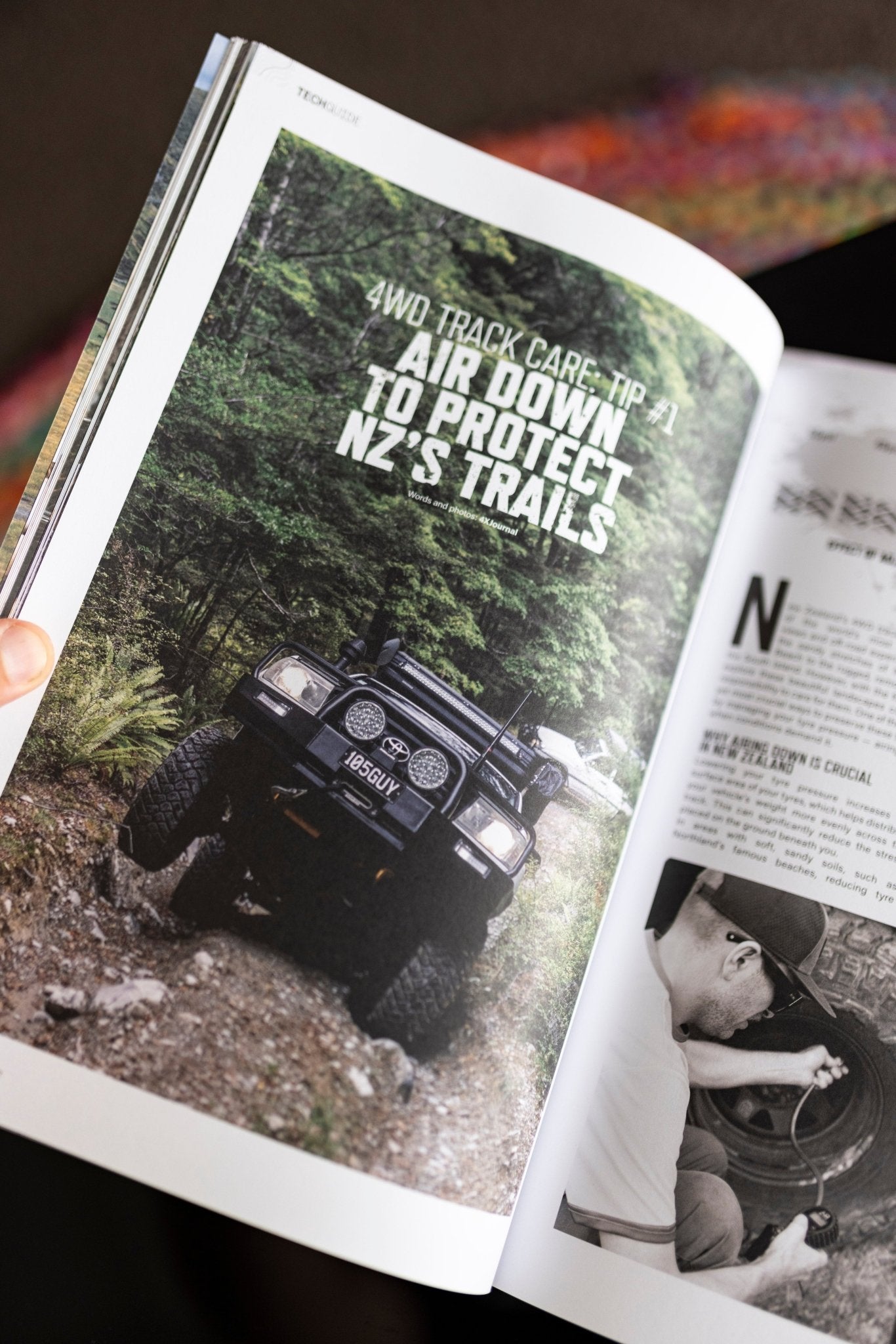
GWM Tank 300 — Shockingly good (for the money)
Share

I’m just going to lay it out there from the get-go — I’m a staunch Toyota and Japanese car lover that once had my timbers shivered at the thought of accepting a Chinese-built, Great Wall Motor Company Limited (GWM) vehicle being a serious contender here in New Zealand. Unfortunately, in New Zealand, I feel as though we’re in the mindset that when we hear some things are ‘Made in China’, the quality is sub-par, when in fact, plenty of everyday appliances we love and use are made in China, and we don’t bat an eyelid. However, Chinese-built vehicles have had us cautious, and they’re relatively new in the game in our market when compared to the usual staples — bugger.

If I’m being completely honest though, it was this particular vehicle’s name that caught my attention. The GWM Tank 300 sounded stout, and a seriously bold claim to name something after a formidable fighting machine. A Chinese four-wheel drive? That’s decent off-road, that kinda looks like a Jeep? These were things I was hearing in the industry. And for the first time, I found myself wanting to get my hands on one to try it out for myself.

Thankfully, the team at GWM here in New Zealand are an incredibly friendly bunch of people, and in no time at all, 4XJournal was given the keys to the little brother in the GWM lineup. After Googling the specs, I was shocked to learn that the GWM Tank 300 boasted an impressive combined powertrain output of 258kW and a staggering 648Nm of torque, backed by a nine-speed automatic transmission with a factory rear locking differential and low-range — epic.

Upon collection, we were immediately told how to turn off a few pesky features that seriously hinder and impede the driving experience on-road. The driver monitoring system is almost dangerous, with how frequently it tells you to concentrate on driving and to take a break should you dare open your mouth (it thinks you’re yawning!). They’re features that are required to obtain a five-star ANCAP rating, but what’s the point if they’re turned off every time you get in the vehicle, as they’re so invasive? GWM New Zealand are more than aware of this though, and there are software updates inbound on most GWM models to ensure it’s an easier, more enjoyable experience getting around those intrusive systems.

The first thing we noticed as we hit the road was the obvious lack of engine noise, with the hybrid’s electric motors initially getting us up to speed. And once the engine kicked in, you came to realise that the output doesn’t feel anything like it is on the spec sheet. If you were in an all-motor, or standard turbo-diesel engine producing those torque figures, it would feel torquey just getting up to speed. How the GWM’s system works is the 258kW of power is unleashed if you’ve got your foot buried through the firewall, fully engaging higher in the rev range. It’s almost an all-or-nothing power band. Which is fine if you’re mashing past someone down a passing lane, but don’t think you’re driving a true 648Nm vehicle (until you’re hard into it of course). Soon, there will be a diesel GWM Tank 300, which we think will bridge that gap between usable on and off-road torque and the outright power output of the petrol variant we were test-driving.

On-road, I was immediately taken aback with just how smooth the Tank is. It’s a seriously nice place to be, driving around town, and we need to have a conversation about the interior. GWM, why on earth did you make this interior so fancy? There are design cues from modern Mercedes vehicles, with premium materials, a high-quality screen, and insane LED lighting that comes to life at night. The Tank’s interior has absolutely no need to be this premium for the price point this vehicle sits in — it’s genuinely shocking. Even the rear locking-differential button sits above a premium watch-style clock on the dashboard, below the main screen.

The exterior is definitely a love-or-hate type scenario. I didn’t mind it and pictured it with 33-inch, or even 35-inch tyres — it has the wheel wells for it, and Tank owners in Australia are already going to town on upgrades on these models. On the highway tyres though, it does look like its shoes are a little too small (but we’re always going to say that).

There were a couple of scary pieces of driving dynamics that we came across during our week with the Tank, with the first being the nose-diving nature of the front suspension layout. Under emergency braking conditions, you can almost get the rear wheels off the ground, the nose drives so aggressively (one Journo in Australia actually got the wheels off the ground!). In our opinion, the front spring rate/shock damper rate are too soft, contributing to this phenomenon. But is that a deal-breaker? Not in our eyes. The first thing we’d do if we owned this vehicle, would be to upgrade the front shocks and springs to both lift the vehicle and to improve its off-road and on-road performance and to handle the weight of the accessories we’d add. Knowing that it behaves this way would definitely dictate our spring-rate choice, though. With independent front suspension, adding the correct shock and spring combination would be an affordable game-changer for the Tank.

The second slightly concerning driving issue we found, was the throttle-delay, or throttle ‘lag’. If you’re hard into the throttle and lift your foot off to go for the brake (so, say a spirited drive out in the twisty stuff), the vehicle continues to accelerate! Seriously unnerving when you’re going for the brake pedal into a tight bend and the car is still hard-charing. There’s a good one-second delay, where the vehicle maintains your throttle input (say, 100%) — around the same time it takes you to get to the brake pedal in a hurry. With a $300 throttle controller, we’re dead-certain you could fine-tune this out though, and it would be the first component we’d buy for the Tank 300.

As tested, the GWM Tank 300 Lux Hybrid retails for $56,990, which is, in our eyes, incredible value for a brand new, premium vehicle with a factory rear locking differential. If you’re in the market for a brand new vehicle, this could be a good option if you know you’re going to build a vehicle for touring, four-wheel driving, or for overlanding. Compared with other four-wheel drives on the market, you could save a bundle of money, and spend it on the upgrades you’d need out on the trails.

Unfortunately what we can’t comment on (yet) is the durability of this platform. You need to ask yourself a few questions when considering new vehicles to our market; what is the nationwide parts supply like? If you damage something and need to order that part in, is it in New Zealand, or is it a six-week wait out of China? What is the dealer service network like? If someone drives into your vehicles and it needs panel repair, what is the lead time on those components and how long will you be off the road? How will the materials hold up in the New Zealand climate? (IE, undercarriage coatings) and so forth — there’s so much more to purchasing a brand new vehicle, than just the vehicle itself. Sometimes, the after-sales experience is the make, or break. We’re told that GWM are making significant investments in this area, so do ask your dealer if you’re interested in one — that’s just our 4XJournal advice.
A quick Google search shows that there are already businesses in New Zealand offering upgrades, and for things like bumpers and so on, you’ll likely need to source those from Australia, as the GWM enthusiast community is growing there rapidly.

As our title suggests, shockingly good value for the money and we genuinely enjoyed our week driving the Tank 300 around. We think it would be a seriously interesting car to build, and to push to its limits, and it could look awesome too with the right wheel, tyre, and lift-kit combo. Drop a comment below, where you’d like us to take it off-road, and we’ll see if we can make it happen!









